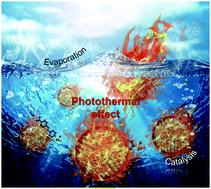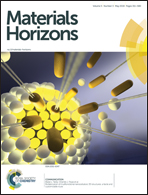Solar-driven photothermal nanostructured materials designs and prerequisites for evaporation and catalysis applications
Abstract
Solar energy is a major source of renewable energy with the potential to meet the energy demand and to support the sustainable development of the world. The efficient harvesting and conversion of solar energy is one of the key factors to maximize the utilization of solar energy. In general, solar energy can be harnessed and converted into various kinds of energy, including electricity, fuels and thermal energy, through photovoltaic, photochemical and photothermal processes, respectively. Among these technologies, photothermal conversion is a direct conversion process that has attained the highest achievable conversion efficiency. The photothermal effect has been used as a novel strategy to augment vaporization and catalysis performance. In this review, we look into the basis of the photothermal conversion process, the design of efficient photothermal conversion materials in terms of both light harvesting and thermal management, a fundamental understanding of various system schemes, and the recent progress in photothermal evaporation and catalysis applications. This review aims to afford researchers with a better understanding of the photothermal effect and provide a guide for the rational design and development of highly efficient photothermal materials in energy and environmental fields.

- This article is part of the themed collections: Materials Horizons 10th anniversary regional spotlight collection: Asia-Pacific and Materials Horizons Most Popular Articles


 Please wait while we load your content...
Please wait while we load your content...